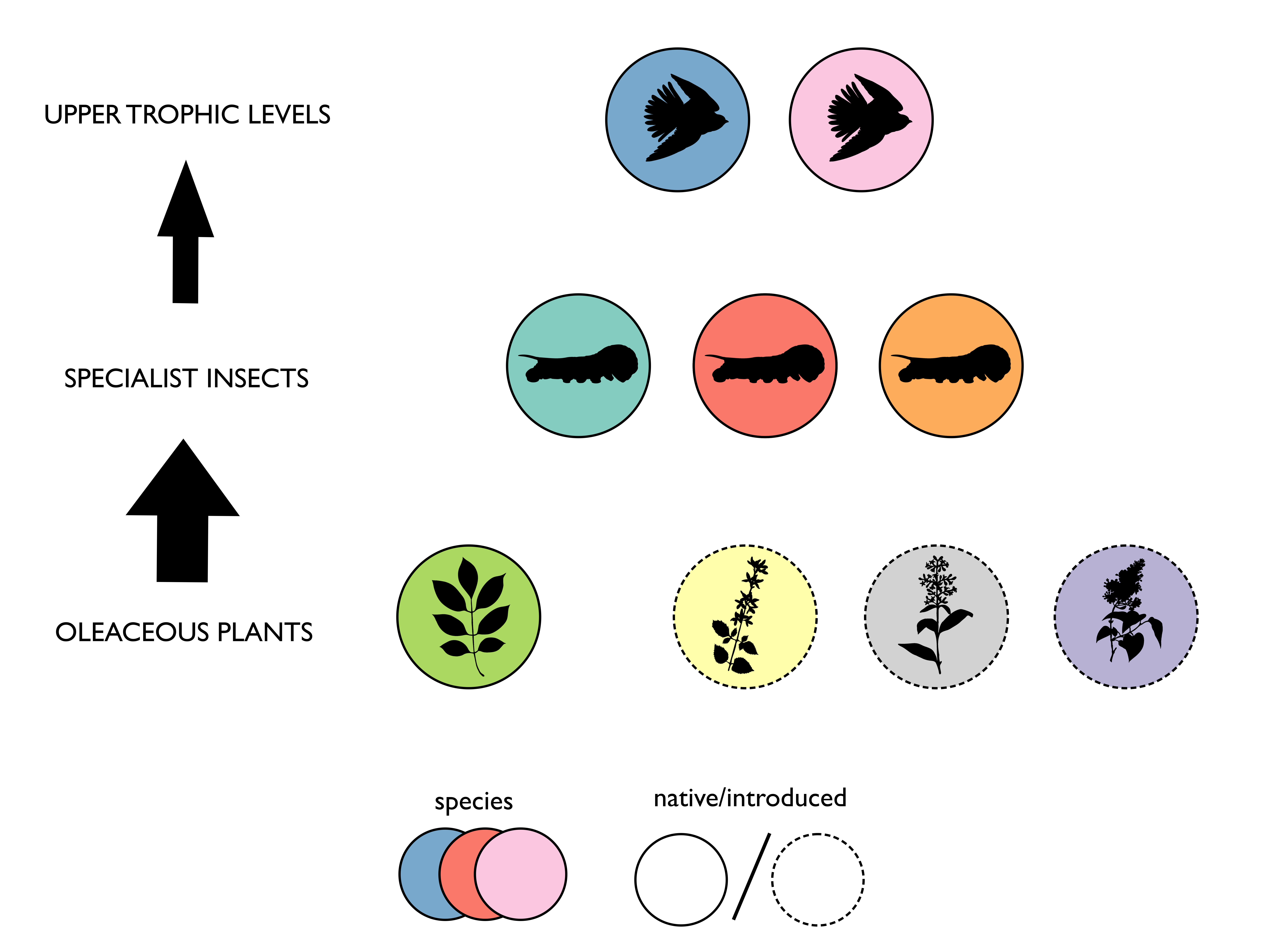Specialist herbivore performance on introduced plants during native host decline
My senior undergraduate thesis was published in Environmental Entomology in January 2023. It is free to view at this link: https://doi.org/10.1093/ee/nvac107.
During the socially-distant summer of 2020, I raised hundreds of caterpillars with the goal of helping to answer a single question: what will become of ash-eating insects once ash disappears (or nearly disappears) from New England and northeastern forests? To chip away at this mammoth question—all insects are sure to respond differently!—I reared three species of hawkmoth caterpillars on four different host plants in the same plant family as their primary host plant, ash.
Over the course of the experiment, I began to notice differences in how the three species tolerated each host plant: Sphinx kalmiae did quite well on lilac, but Sphinx chersis perished entirely on the same plant. These are the differences that colored my narrative. The problem of disappearing ash will not be discovered by painting in broad strokes.
